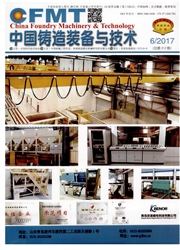

 中文摘要:
中文摘要:
研究分析了目前广泛采用的几种典型砂型铸造方法(湿型粘土砂、呋喃自硬树脂砂、碱酚醛自硬树脂砂、CO2硬化水玻璃砂、酯硬化水玻璃砂)的环境特征,主要从产生的气体挥发物和旧砂回用性两方面分析它们的区别,从铸造粘结剂的角度讨论实现清洁生产、绿色铸造存在的问题,概述铸造粘结剂的发展趋势与方向。笔者认为,相当长时间内砂型铸造仍然是我国铸造生产的主要方式,少污染的无机粘结剂大量采用、低成本无排放的旧砂再生回用技术开发利用、铸造有害气体少量化及其无害化排放,应是我国铸造材料与技术进步的发展方向。
 英文摘要:
英文摘要:
Environmental characteristics of several typical sand mould casting processes were investigated and analyzed including wet clay bonded sand,no-bake furan resin bonded sand,no-bake alkaline phenolic resin bonded sand,CO2 -cured sodium silicate bonded sand and ester-cured sodium silicate bonded sand. The differences of these sand casting processes were compared and analyzed,focusing on two aspects inclu-ding volatile gas and reuse of used sand.The problems of realizing cleaner production and green casting were discussed from the aspect of casting binders.Some development trends and directions of casting bind-ers were summarized.The authors believe that sand mould casting process is still the main method of cast-ing production in China for quite a long time in the future,and the development direction of casting material and technology progress should be the large use of less-pollution inorganic binder,development and uti-lization of low-cost and no-discharge reclamation-reutilization technology of used sand,small-quantity and harmless discharge of harmful gas during casting process.
 同期刊论文项目
同期刊论文项目
 同项目期刊论文
同项目期刊论文
 期刊信息
期刊信息
